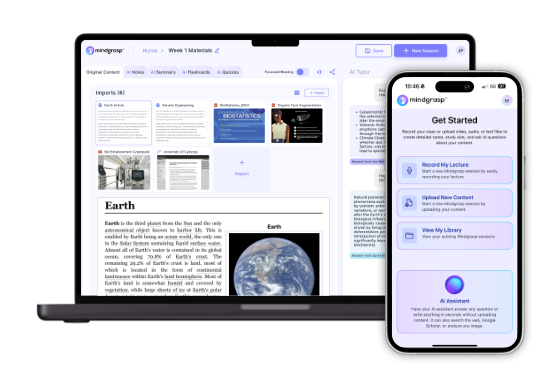
To cram for a history exam, we need to be smart about it.
First, prioritize key themes and events your professor emphasized. Create flashcards for important dates and people, and use active recall instead of passive re-reading.
Break study sessions into 25-minute chunks with short breaks.
Explain concepts out loud to cement your understanding, and make simple timelines to connect events. Don't forget self-care—hydration and sleep matter too!
The techniques below will transform your last-minute studying from panic to productive.
Why cramming for history feels harder than other classes
While many subjects can be challenging to cram for, history often feels like it's in a league of its own.
We're not just memorizing formulas or vocabulary—we're trying to absorb centuries of interconnected events, names, and dates all at once!
The cognitive load is immense because history isn't just about facts—it's about interpretation and context.
When we're cramming for a history exam, we need to understand not just what happened, but why it happened and how it connects to other events. This makes last-minute studying particularly overwhelming.
Unlike math or science, where answers are often clear-cut, history requires us to analyze and synthesize information.
It's hard to develop these critical thinking skills when we're frantically flipping through textbook pages at 2 AM!
That's why cramming for history feels especially difficult.
Boost Your GPA Faster with Mindgrasp
Instantly turn your class notes into smart summaries, flashcards, and quizzes—study less, learn more, and ace your exams.
Try it FreeStep 1: Determine what to study (Prioritize high-impact topics)
When facing a mountain of history material the night before an exam, your first task is to figure out what's actually worth studying. We've all been there—staring at textbooks wondering where to begin.
Start by checking your syllabus and notes for key themes that your professor emphasized repeatedly. High-impact topics like significant wars, revolutions, and political movements should top your list.
If you have access to past exams, use them as gold mines for predicting what'll show up tomorrow!
Prioritize studying chapters related to recent lectures—these are fresh in your professor's mind too.
Finally, make a quick list of key dates and terms you absolutely must know. Remember, it's better to know 80% of the important stuff than 20% of everything!
Step 2: Gather your history materials and make a quick plan
Now that you've identified what to study, it's time to get organized! Let's gather your history materials—textbooks, class notes, handouts, and any online resources—in one place. This prevents wasting precious time hunting for that one important page later.
Next, organize your materials by theme or chronology—whichever makes more sense for your course. Create a simple study guide highlighting key dates, people, and events that you absolutely need to know.
Break down your study sessions into manageable chunks (25-30 minutes works great), and don't forget to prioritize the most important topics first!
If you only have a few hours, focus on the material your teacher emphasized or topics with the most points on the exam.
Step 3: Use active recall to study history (Don’t just re-read)
The biggest mistake you'll make when cramming for history is simply re-reading your textbook over and over. Trust us, your brain needs more engagement to lock in those facts!
Instead, use active recall techniques that force your brain to retrieve information.
Try these cramming-friendly approaches:
- Create flashcards with key dates, people, and events—then quiz yourself repeatedly
- After reading a section, close the book and summarize what you remember
- Work through practice questions from old exams to simulate the test environment
- Explain concepts out loud (even to your cat or roommate!)
These methods reinforce understanding by creating stronger neural connections than passive reading. Your brain remembers what it actively works for—so make it work a little harder now to save yourself stress later!
Step 4: Break down complex history processes with diagrams
History's complex processes often feel like tangled webs of names, dates, and events that blur together during a cram session.
Let's make them manageable with visual tools!
We've found that flowcharts work wonders for sequencing events (like the lead-up to WWI), while Venn diagrams help compare historical figures or movements at a glance.
When you're trying to understand why things happened, cause-and-effect diagrams connect the dots between events and their consequences.
Don't forget about maps—they're perfect for visualizing territorial changes over time.
And for those really complex processes (we're looking at you, French Revolution), infographics combine key dates, figures, and steps into one easy-to-digest visual.
These diagrams transform scattered information into organized knowledge that's much easier to recall during your exam!
Step 5: Leverage AI study tools like Mindgrasp AI for history
When cramming feels overwhelming, AI tools like Mindgrasp AI can become your digital study buddy!
We've found that these clever assistants can transform how you tackle historical content in those vital pre-exam hours.
Mindgrasp AI excels at creating concise study guides from your messy notes, helping you focus on what really matters.
Try Mindgrasp for Free!
Experience an easier, faster way to boost your GPA. Sign up now to try Mindgrasp AI for free and see how AI-powered learning transforms your study routine.
Try it FreeNeed to memorize key dates and figures? The tool generates interactive flashcards that make remembering facts less painful.
You can even use it to create practice questions tailored to your course material—perfect for predicting what might show up on your test!
What we love most is how it breaks down complex historical narratives into bite-sized chunks.
Just upload your materials, and let the AI identify important themes and connections you might've missed.
Step 6: Memorize key terms and definitions with flashcards & mnemonics
After you've organized your key materials, mastering historical terminology becomes your next essential battle!
We've found flashcards are absolute lifesavers for cramming those key terms and definitions. Here's how to maximize them:
- Create simple cards with terms on one side, definitions on the other
- Group related concepts together (like all the causes of World War I)
- Use mnemonic devices to connect terms to their meanings—the sillier, the better!
- Quiz yourself regularly during study sessions, not just reading the cards
- Review your flashcards multiple times throughout the week—repetition is key!
Step 7: Practice with questions and problems
Testing yourself with real exam-style questions is the ultimate way to prepare your brain for the actual history exam!
We've found that using practice questions from previous exams or textbooks helps you get comfortable with the exam format you'll face.
Try these approaches:
- Create a list of potential essay questions about key themes
- Quiz yourself with flashcards on key terms, dates, and events
- Join study groups where you can take turns quizzing each other
- Analyze your answers to understand the reasoning behind correct responses
Don't just answer questions—take time to understand why you got something right or wrong.
This deeper comprehension will stick with you far better than simple memorization.
Step 8: Take short breaks and look after yourself
Even though it might seem counterintuitive, stepping away from your history notes regularly is essential for effective cramming!
We recommend following the 25-5 rule: study for 25 minutes, then take short breaks of 5 minutes to refresh your mind. This pattern helps maintain concentration and prevents burnout.
During your breaks, try some light stretching or a quick walk – it gets your blood flowing and recharges your brain.
Don't forget to stay hydrated and keep healthy snacks like fruit or nuts nearby to fuel those marathon study sessions.
And here's a non-negotiable: get adequate sleep before your exam.
No amount of cramming can make up for a tired brain that can't recall those historical dates and events when you need them most!
Cramming for history in 1 Day, 3 Days, or 1 Week
Let's look at how to cram effectively based on how much time you've got left before your history exam.
If you're down to just 24 hours, focus purely on key events, dates, and figures using flashcards and mnemonics for quick memorization.
With three days to spare, divide your material into thirds and tackle one section per day while using active learning techniques like summarizing and teaching concepts aloud.
When you have a full week, create a day-by-day study plan that covers all topics systematically, allowing time for practice tests and those all-important breaks to keep your brain fresh.
Cramming for history with one week left
When you've got a full week before your history exam, you're actually in a pretty good position to prepare thoroughly. Start by creating a chronological study guide that highlights key events, major themes, and important historical figures—this gives you the big picture.
We recommend using flashcards for those pesky dates and terms you need to memorize. Break your study sessions into manageable chunks with the Pomodoro technique—25 minutes of focus followed by a 5-minute break works wonders!
Don't study alone if you don't have to. Group study sessions let you quiz each other and clarify confusing concepts. Someone else might explain something in a way that finally clicks for you!
Finally, save your last day for practice exams to build confidence and familiarity with question formats.
Cramming for history with three days left
Three days before your history exam might seem like you're running out of time, but we've got a solid plan that'll help you make the most of these vital 72 hours.
Start by breaking down your material into key themes and prioritizing what's most likely to appear on the test.
Create a condensed study guide highlighting significant dates and concepts – this will be your lifesaver!
Schedule dedicated study blocks each day (about 2-3 hours each) with short breaks to keep your brain fresh.
Don't just reread notes; use active recall techniques like flashcards or self-quizzing to cement facts in your memory.
If possible, join group study sessions – explaining historical events to others is one of the best ways to solidify your own understanding.
Cramming for history with one day left (24 hours)
So you're down to just 24 hours before your history exam—don't panic! We need to be super strategic now.
Start by reviewing key themes and figures that appeared most frequently in your course. Break your day into manageable sections with 45-minute focused study sessions followed by 15-minute breaks.
Flashcards are your best friend today—use them for dates, terms, and key events. Carry them everywhere!
Spend about 2 hours on active learning—explain concepts aloud, teach your cat (or roommate), or record yourself summarizing important topics. This helps cement information in your memory.
Finally, dedicate at least 3 hours to practice questions or past exams. This reveals what you know and what needs one final review.
Remember to sleep—your brain needs rest to function tomorrow!
Common mistakes to avoid when cramming and how to fix them
Although cramming for a history exam might seem like a good last-minute strategy, it's easy to fall into several common traps that can sabotage your efforts.
Let's look at what to avoid:
- Trying to memorize everything at once—instead, break topics into smaller chunks
- Focusing on dates without understanding concepts—remember, connections between events matter more than isolated facts
- Poor time management—create a structured study schedule with specific slots for each topic
- Skipping practice tests—always test yourself with past exam questions to identify weak spots
- Pulling all-nighters—adequate rest is essential for memory consolidation
We've seen students make these mistakes repeatedly.
Final Takeaways on history cram studying
When you're down to the wire with your history exam looming, remember that effective cramming isn't about memorizing every fact—it's about strategic focus.
We've found that prioritizing key ideas from your syllabus gives you the biggest return on your limited study time.
Develop smart study habits like creating condensed study guides that highlight essential dates and figures. Use mnemonic devices to lock in complicated sequences—they're lifesavers when you're pressed for time!
Don't forget to practice active recall by quizzing yourself on important material.
And please, take short breaks! Your brain needs those little resets to process what you've learned. A 5-minute breather every hour will actually help you retain more than if you powered through non-stop.
Download Mindgrasp from the App Store
Access Mindgrasp at your desk for in-depth research and writing projects, or use the mobile version to easily access your content on-the-go or record live lectures.
Download the iOS App
